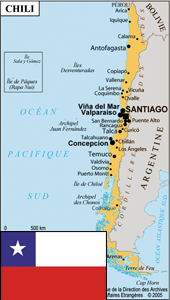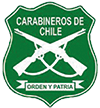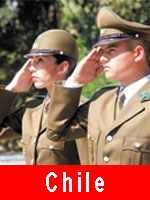
Carabiniers of Chile
|
1903 Ministry of attachment: Ministère de la Défense et ministère de l’Intérieur Workforce: 45 000 General manager: Général directeur M Bruno VILLALOBOS KRUMM Address: Avenida Bulnes 8 - SANTIAGO DU CHILI Website: www.carabineros.cl Communication Manager: Lieutenant-colonel Marcos GONZALEZ PONCE Tél.: 00-56-2-9220071 / 72 Email: jrelinte@carabineros.cl ou marcos.gonzalez@carabineros.cl Address: Paseo Bulnes N° 80, Oficina 101 - Santiago, Chile 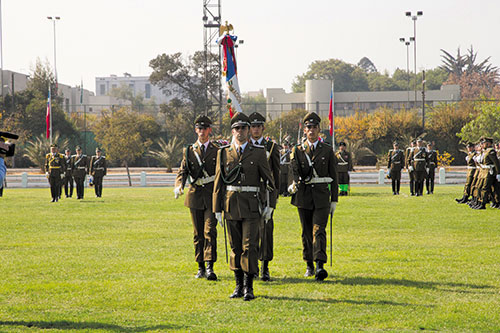
|
History
The first units of Gendarmerie appear in Chile in the 1880s. In 1903, a first body of "carabinieri", integrated into the Chilean army, is trained in order to restore the order in the region of Auracanie. The president Carlos Ibanez del Campo’s statutory order of April 27th, 1927 merges this body with both civil polices structures (the local police and the tax police) in order to train a single institution under the authority of Ministry of interior: "The Chile Carabinieri". In 1929, its official badge is adopted. Ten years later, a police Sciences Academy, "Academia de Ciencias Policiales" (ACIPOL), is inaugurated in order to train the personnel in judicial power. In 1960, the institution is equipped with an "Air service". In 1960, the recruitment feminizes. In 1973, the "Chile carabinieri" under the command of general Caesar Mendoza Duran stands by the side of the army during the coup d’état. From 1973 till 1990, during Augusto Pinochet’s military regime, the "Chile carabinieri" commanding officers is an official member of the military junta Government and he has an intelligence and security service, the Dirección de Comunicaciones de Carabineros (DICOMCAR), dissolved after 1985. The decree of September 9th, 1974 puts the carabinieri under the supervision of the Ministry of Defence. The 1980 new constitution grants to the Chile carabinieri and to the Chilean investigative police "the quality of unique country strength in charge of the order and the security in Chile". Connected with the Ministry of National Defence, integral part of the Chilean army, the body sees its service passing under the authority of the Ministry of interior and the Law and order from 2011.
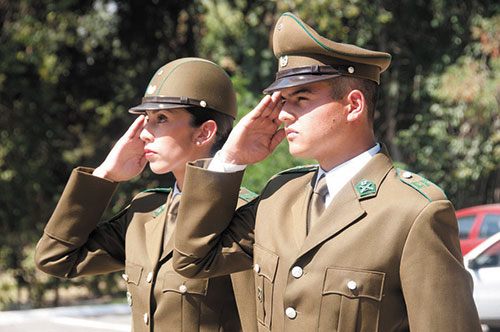
Organization
By a decree on September 9th, 1974, the Chilean carabinieri were placed under the authority of the Ministry of Defence, under the supervision of an undersecretary to the carabinieri. However, since 2011, the institution is put for employment with the Ministry of the Interior regarding general law and order and maintenance of law and order missions (The whole activity in the practice).
Central Organization
From the head office depend the general division and the services composing the General Inspectorate and the general director cabinet, which includes the departments of the internal communications, the public relations and the international relations.
The general division consists of:
• 4 national directions: Security and public order, personnel, logistics, police intelligence;
• technical services: The planning and development direction, the direction of finances, and the direction of the justice.
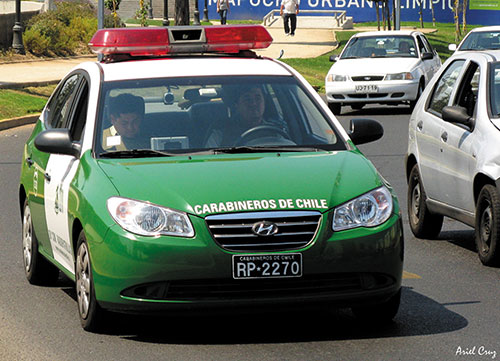
Territorial organization
• 14 zones under a general’s command (12 administrative regions and the Santiago Metropolitan region, divided into 2 zones, East and West).
• 34 prefecturas (groupings), under colonels’ command.
• 270 comisarias (companies from 70 to 150 men), under a major’s command or subcomisarias under the orders of a captain whose jurisdiction is the municipality.
• 222 tenencias under a lieutenant’s command, with 15 policemen, implanted in the little populated zones. Intermediate command echelon.
• 436 retenes (equivalent to brigades) that consist of one non-commissioned officer, and from 6 to 8 men.
• 31 avanzadas which are in fact temporary stations set up according to the seasons, essentially in border zone in the Mountain range in order to check the access of paths free of snow and to fight against the drug trafficking, the smuggling and the irregular immigration.
On Santiago exist 5 specialized prefectures: Special forces (equivalent to the members of the French anti-riot police – called ‘Compagnie Républicaine de Sécurité’ or CRS), road traffics, radio-patrols, minors and aerial.
Specialized Training
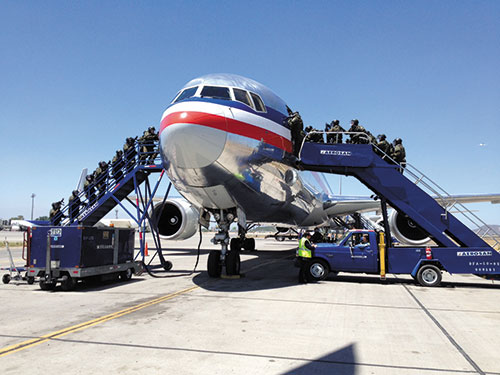
• Scientist and Technical Police Laboratory, named Laboratorio de Criminalística (LABOCAR).
• Group of the special police operations, called Grupo de Operaciones Policiales Especiales (GOPE) or O S 6 (equivalent to the French G.I.G.N.).
• Special Forces (equivalent to the anti-riot mobile gendarmerie units) that dispose of some specialized feminine carabinieri in "feminine" demonstrations.
• Specialized service for fighting against drugs: OS 7.
• Specialized service for fighting against criminality: 0 S 9.
• Units equivalent to the French criminal investigation brigades, called Sección of Investigaciones Policiales (SIP), specialized in the judicial matters. These units come to strengthen the territorial units when these are confronted by a grave offence, which they cannot handle.
• Presidential Guard and Parliament protection unit.
• Traffic accidents investigation section, called Sección of Investigación of Damage el Tránsito (SIAT).
• Highways Security Units: 24 tenencias distributed from north to south.
Missions
• Prevention (Presence, defence, creation of the conditions for a sustainable interior peace in Chile).
• Control of the law and order: To enforce the law, to restore the law and order and to achieve the orders emanating from courts.
• Education: To make the laws of the Republic known and make known the dangers.
• Service: To inform the community about a special situation, a state of paths, etc.
• Social Solidarity: To the advantage of the victims of disasters and offences.
• National Integration: To watch the defence of the borders and bring services in various places distant from urban areas.
• Environmental Impact: To help to preserve and protect the environment.
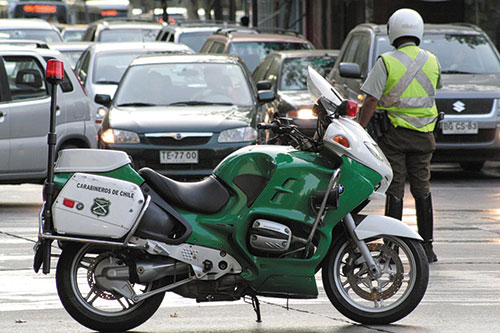
Staff
The institution includes at present 45 000 personnels among which approximately 4 000 officers and 12% of women.
The staffs is classified in 4 categories:
• the carabinieri;
• the senior non-commissioned officers and the subordinate non-commissioned officers;
• the officers, distributed in General officers, Senior officers, chief officers and junior officers;
• the civil staff.
Training institutions
• The Police Sciences Academy, called Academia de Ciencias Policiales (ACIPOL) - Charles Hamilton nº 9798, Las Condes, Santiago du Chili - tel: 56 - 2 - 9221145 ó 56 - 2 - 9221140 - Website: www.acipol.cl
• The Carabinieri School created in 1908 in order to train officers. It is called Escuela de Oficiales de Carabineros - Antonio Varas 1842, Providencia, Santiago - tel: (56-2) 922 11 80 - 922 12 04 - Website: www.escuelacarabineros.cl
• The Carabinieri non-commissioned officer school, called Escuela De Suboficiales De Carabineros De Chile (ESUCAR) - École "Suboficial Mayor Fabriciano González Urzúa" de Carabiniers du Chili - Rodrigo de Araya Nro. 2601, Comuna de Macul, Santiago - Website: www.esucar.cl
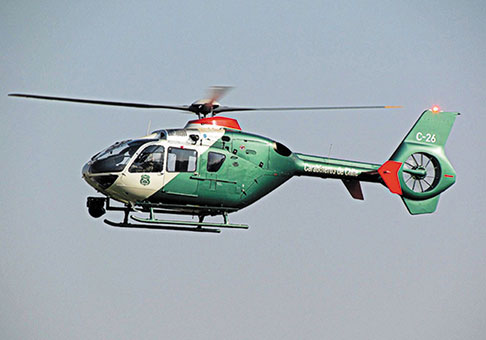
Main equipment
• Armament: the Carabinieri replaced recently their Ruger P90 by SIG P220. An increasing number also favours Austrian Glock 17, while most of the police forces use the Chilean revolver FAMAE or the Brazilian model Taurus 82.
• Vehicle types: scooters, motorcycles, cars (Dodge Charger), small vans and vans-pumps.
• Aerials means: Helicopters: Augusta Westland AW 109, Bell 206, Eurocopter EC 135, Eurocopter BO 105, MBB / Kawasaki BK 117. - Planes: Cessna 182, Cessna 206, Cessna 208, Cessna 210, Cessna Citation, Piper PA-31 Navajo.
Cooperation
The "Chile Carabinieri" is, since October 2005, an associate member of the FIEP, association including police forces with military status of the Euro-Mediterranean space.
An officer of "Chile Carabinieri" is allocated to the embassy of Argentina in Paris, as "Gendarmerie Attaché".
The cooperation is moving on two main themes, with the GOPE (The Special Operations Group):
• a training on the "Air counter terrorism" in 2013;
• a GOPE Dog Handler training for the research of explosives in 2014;
• the participation in the training courses organized with the CIFAD on struggling against drugs.
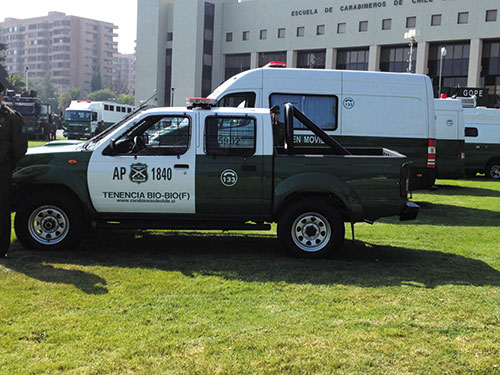
© The iconography was provided by the concerned gendarmeries

